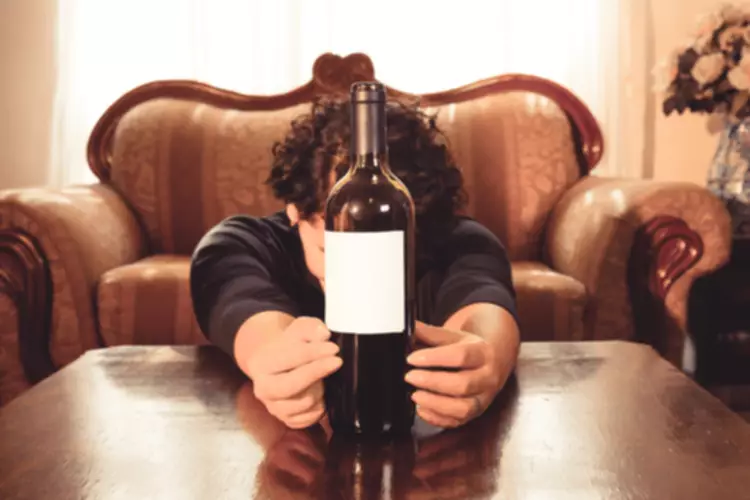
Such networks provide encouragement, accountability, and understanding, making it easier to navigate challenging moments. Regular engagement with support systems https://ecosoberhouse.com/ reinforces recovery goals and enables individuals to share experiences and insights. Triggers can be internal (anxiety, irritability, stress, anger, low self-esteem) or external (people, places, or things that remind one of their past use). Making a list of internal and external triggers is an efficient way to gain awareness of one’s triggers and reduce the risk of relapse. The path to sobriety is a long and difficult journey, and the process is different for everyone. While some may never relapse, others may relapse several times at some point during recovery.
Opiate Addiction Treatment Program
- This doesn’t mean treatment failed, but it could signal treatment may need to be resumed or adjusted.
- The National Institute on Drug Abuse estimates that 40 to 60 percent of people who were once addicted to drugs will eventually relapse.
- Joining a self-help group has been shown to significantly increase the chances of long-term recovery.
- Setting aside time to reassess these elements ensures that the relapse prevention plan remains a powerful tool tailored to one’s current needs.
- It may also involve normalizing occasional thoughts and relapse, and learning methods to let go of them quickly.
- It can also be assuring to know that most people have the same problems and need to make similar changes.
Relapse can be an indication that treatment relapse prevention needs to be reinstated or adjusted. Sticking with treatment for the entire length of the program is important, too. Recovery from drug and alcohol addiction can be a long and challenging process.

Recovery During the Holidays
- It can bring on feelings of shame, frustration, and often cause someone to feel as if they are incapable of changing their behavior or achieving their goals.
- It’s about creating a lifestyle that can help a person maintain their recovery goals.
- Our trained professionals will help you find treatment options that best suit your needs.
- Remember, recovery is a lifelong journey, and setbacks are part of the process—but with the right support, they can be overcome.
- Based on operant conditioning, the motivation to use in a particular situation is based on the expected positive or negative reinforcement value of a specific outcome in that situation5.
Relapse prevention group activities can be a cornerstone in the journey to recovery. These activities allow you and other group members to share experiences and foster camaraderie. Surround yourself with a strong support system of friends, family, and sober acquaintances. Additionally, join local recovery meetings to interact with peers in similar situations. Setting up a system to reach out if they sense you may be heading toward a relapse might also be helpful. This way, you can ensure that someone will be there to remind you of the benefits of sobriety and provide support.

Reducing Relapse Risk
By the time most individuals seek help, they have already tried to quit on their own and they are looking for a better solution. This article offers a practical approach to relapse prevention that works well in both individual and group therapy. For example, stress at work or conflicts in personal relationships can stir urges. Taking time to assess one’s history with substance use can help in pinpointing specific triggers. Keeping a journal to document emotions and situations leading to cravings can also facilitate this identification process. They can be anything from certain people, places, or situations, to emotions and thoughts that provoke cravings for substances.

It has been shown that the way to get the most out of 12-step groups is to attend meetings regularly, have a sponsor, read 12-step materials, and have a goal of abstinence 24,25. 1) Clients often want to put their addiction behind them and forget that they ever had an addiction. They feel they have lost part of their life to addiction and don’t want to spend the rest of their life focused on recovery. Recovering individuals tend to see setbacks as failures because they are unusually hard on themselves 9. Setbacks can set up a vicious cycle, in which individuals see setbacks as confirming their negative view of themselves.

- Providers need to emphasize that occasional thoughts of using or cravings are a common part of recovery so they can help the patient equip themselves with the skills needed to work through these challenges.
- Since they did not allow themselves small rewards during the work, the only reward that will suffice at the end is a big reward, which in the past has meant using.
- Regardless, it is important to consider the following items when creating a relapse prevention plan.
- These thoughts can lead to anxiety, resentments, stress, and depression, all of which can lead to relapse.
- Urges and cravings precipitated by psychological or environmental stimuli are also important6.
They often assume that non-addicts don’t have the same problems or experience the same negative emotions. Therefore, they feel it is defensible or necessary to escape their negative feelings. The cognitive challenge is to indicate that negative feelings are not signs of failure, but a normal part Substance abuse of life and opportunities for growth. Helping clients feel comfortable with being uncomfortable can reduce their need to escape into addiction.

